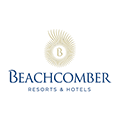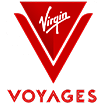A ski holiday is like no other, especially if it’s your first time. You’ll likely catch the ski bug and end up going every year like many others.
It can be daunting when you’ve never hit the slopes before, like what you should pack, should you have lessons or rely on your experienced ski friends and even knowing the lingo (what’s a mogul?!).
If you’re heading for the mountains for the first time or just looking to refresh your skills, this handy guide is for you:
Let's get the lingo down
Piste/Run/Slope - these are the paths you ski down and are called by a few different names
Lift Pass - your ticket to the mountain! This enables you to use the lifts, they are normally contactless so you can store them in your ski jacket pocket and swipe as you go on
Magic carpet - Normally found in the beginner’s area, it’s a conveyor belt that you stand on and moves up a hill
Chairlift - These are bench-like seats that hang from a cable and will whisk you up the mountain, a bar will come down in front of you
Gondola - These are more like cabins, in most cases you store your skis in a rack on the outside and grab them when you get off
Bluebird - Clear blue skies and sunshine - the perfect day to hit the slopes
Powder - Fresh snow dumping that hasn’t been skied through yet
Moguls - These are bumps of hard snow that form on a piste
Off-Piste - This is skiing away from the piste in unmarked areas. This is done only be experienced skiers as you will need special equipment for this.
Apres-Ski - Where you head after your day on the slopes for fun and entertainment into the evening, you stay in your ski gear and dance away on the tables and a tipple or two.
Snowplough - The first move you’ll learn when you ski! Also referred to as the ‘pizza’ it helps you control your speed and direction by creating a V shape with your skis, with the front of your skis nearly touching
Carving - Once progressed from the beginner stage, this is a move involving leaning your body and turning on the edge of your skis
Understanding the runs
A piste map can be quite confusing, there are different colour lines heading down all ways of the mountain and you’re not sure which one you’re meant to be going down.
Pistes are classified by how difficult they are and so match your experience with skiing. Some resorts do vary but generally speaking, you will be able to tell.
Green Run - Beginner run used in Europe (excluding Austria & Switzerland), North America, Japan, Australia, New Zealand, South America
Blue Run - Intermediate run used in Europe, North America, Australia, New Zealand, South America / Beginner ( Austria & Switzerland)
Red - Advanced used in Europe, Japan, South America / Intermediate (Japan)
Black - Expert used in Europe, Japan, Australia, New Zealand
Black Single Diamond - Expert used in North America
Black Double Diamond - Extreme used in North America, Australia, New Zealand
Black Triple Diamond - Extreme used in limited North America Resorts
Looking for some inspiration? Check out the ski episode of The Travel Podcast!
Let's get packing
When packing for a ski holiday it can be easy to think you’ll need every warm item of clothing you own and that you must buy all the ski gear… just hold on. For a first time skier, it’s ideal to borrow clothing items from friends if they have them so you can see if enjoy it before you commit to buying brand new ski clothes, and if not in some cases you can hire some.
In terms of being warm, it’s ideal to pack clothes you can layer rather than your thickest jumper. Surprisingly you will get hot when skiing especially if you’re wrapped up! Stick with thermal base layers and then a jumper over the top.
Here’s what you’re going to need:
- Salopettes or ski pants
- Waterproof jacket
- Gloves
- Socks
- Goggles
- Sunglasses (it gets very bright when the sun reflects off the snow!)
- Thermal layers
- A Buff ( a material that covers your neck and chin to keep you warm)
The right resort
We all prefer different things from our ski resorts, but if it’s your first time there’s a few things you should look for. In general, most resorts will have beginners slopes but it’s ideal to choose somewhere that has a good mix of beginners slopes for you.
Alpe d’Huez, France - The French Alps are a keen favourite amongst skiers, and this resort, in particular, is great for beginners. It has ideal runs and is a sunny resort, making for a perfect day on the slopes. The beginner’s area is near the resort, and then you can reward yourself with a drink at La Folie Douce.
Tremblant, Canada - Canada is known for its immaculate pistes and light snow, creating the perfect canvas to learn on. The runs here are wide which means you can use as much space as you need to perfect your snowplough and turns. All the runs come down to one central point so it’s really easy to get around.
Arinsal, Andorra - A proclaimed beauty for beginners, this resort allows you to benefit from wide, gentle slopes, and you’ll even find an area dedicated to families and new skiers. Take the main gondola to the Comallempla area where you can practice without other skiers speeding past you.
Corvara, Italy - The Dolomites are the perfect backdrop for your ski holiday. You’ll find a perfect blend of easy slopes, breath-taking views and beautiful Italian tradition. With 70km of blue runs, you’ve got plenty of options for mastering your ski skills. Long, wide runs mean you have space to build your confidence and get used to your ski legs.
Top tips
Until you hit the slopes for yourself and find your ski (or board) legs, we've got some top tips curated by first-time skiers!
- Borrow ski gear
- Take lessons either before you go, but 100% in resort
- Wear thin layers
- Stay in accommodation near to the lifts
- Ski-dedicated workouts; as skiing isn't like any other form of exercise
- Don't overdo it
- Get the right travel insurance that will cover ski
- Keep your energy levels up
- Always drink responsibly



![[[+tv.holiday.alttext]]](https://cdn.notjusttravel.com/media/medium/uploads/99/99b7960e024fe4b8f56673b3f2eb52ef569a7dc0.jpg)
![[[+tv.holiday.alttext]]](https://cdn.notjusttravel.com/media/medium/uploads/78/78038da9f577f15198df58764168ac18db44b522.jpg)
![[[+tv.holiday.alttext]]](https://cdn.notjusttravel.com/media/medium/uploads/43/43d2d46981f7f9c51db6868faf170c01afb1ba86.jpg)
![[[+tv.holiday.alttext]]](https://cdn.notjusttravel.com/media/medium/uploads/d0/d0689c9f152d4a63f75923f3960a3d3c44ae543b.jpg)
![[[+tv.holiday.alttext]]](https://cdn.notjusttravel.com/media/medium/uploads/cb/cb9cc5cf84ac7356804ce7b676aa84cde09c65cd.jpg)
![[[+tv.holiday.alttext]]](https://cdn.notjusttravel.com/media/medium/uploads/77/77ee8e45d979b2314da4c4ecfbfa735e42eaae48.jpg)










